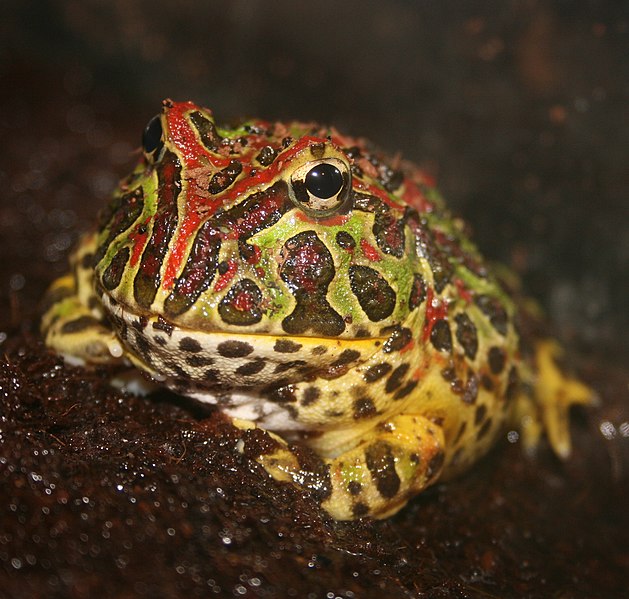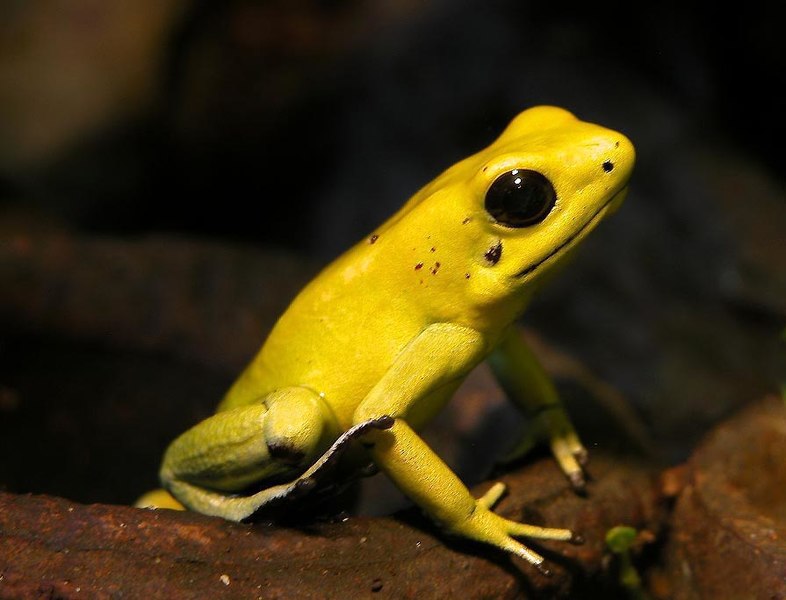Frogs are amphibians. They live both in water and in land in a particular stage of their life. They are particularly noticeable during rainy days for their loud croaks especially during the night.
Some frog species are evidently unique in appearance and in characteristics. Here are some of them.
Darwin’s Frog (Rhinoderma darwinii)
Male Darwin’s Frogs were once thought to be cannibals that they eat their young. It was learned that male Darwin’s Frogs put their young or tadpoles in their mouth to protect them from predators. In the literal sense, these tadpoles are raised inside the vocal sac of the males. These frogs are endemic to Argentina and Chile. They are also known for their technique to avoid their hunters by lying on the ground looking like a dead leaf until the predators pass by.
Hairy Frog (Sniktus bubus)
Male species of Sniktus bubus or Hairy Frogs are the only amphibian that grows hair-like projections on their body. These hair-like structures aid the Hairy Frogs to absorb more oxygen from the water and are evident only during breeding season to stay under water and also serve as protection of the egg. These frogs are native to Central Africa.
Burrowing Frog (Heleioporus)
Burrowing Frogs of Australia are among the most unusual frog species in the world. This is quite impossible but they can stay in suspended animation for as long as seven years. Whew, that’s incredible.
Wallace’s Flying Frogs (Rhacophorus nigropalmatus)
Wallace’s Flying Frogs are like Flying Squirrels. They use their webbed feet to glide. These creatures can glide at a distance of 46 m through the air giving the appearance that they are flying.
They can descend at an angle of less than 45° relative to the horizontal and can also descend vertically at angles greater than 45° only which is referred to as parachuting. These frog species have suction pads on their webbed feet which help their balance in the high trees that they live in.
Titicaca Water Frog (Telmatobius coleus)
Titicaca Water Frogs are unique frogs that can only be found up high in Lake Titicaca in South Africa. These frogs have built-in swim suit which is good for being in water but not out of water for too long. These distinctive excessive amounts of skin are used to help the frog breathe in the high altitude in which it lives. With a length of up to 50 cm and a weight of 1 kilogram or more, Titicaca Water Frogs, are the world’s largest aquatic frogs.
Wood Frog (Rana sylvatica)
A magician was able to stay frozen for 36 long hours the Woof Frog of North America can stay frozen for a long period of time during hibernation. It can also invent suspended animation.
Miscellaneous Facts about Frogs
Poison Dart Frogs consume poisonous ants and Toads cover themselves in mucus for a short time. The mucus is a highly pharmaceutical concoction, anti-fungal, anti-viral.
Surinam Toads are amazing amphibians. They can carry 100 young on their back while the Cane Toad has invaded 39 countries.
Argentine Wide-Mouthed Frogs are colorful and voracious frog species. Their mouths are 50% of their body length. They literally bite off more than they can chew and bite anything that comes near their mouth.
Tomato Frogs are among the most colorful and brightly colored frog species. As a protection, it secretes glue.
Among the most dangerous and deadliest creatures in the world are the Golden Dart Frogs. A 0.1 milligram of Golden Dart Frog’s poison is enough to kill a person.
Tree Frogs are prolific jumpers. Some species can jump 150 times their own length which is equivalent of a human jumping over the gigantic “Titanic”.
Gray Tree Frogs are unusual amphibians. During mating season, the female creates a bubbly home that hangs on a cliff. After that, the eggs fall on the bubbly home, and then after hatching, they fall into a small body of water.
Do you know that Tarantulas and Frogs have symbiotic relationship? The frog lives in the damp cave and lives under the protection of the tarantula. The frog protects the Tarantulas egg sacs from ants and other predators.
See also
- The True Meaning of Friendship As ShownBy Frogs
- Freakiest and Weirdest Froggy Frog Frogsin the World
- Amazingly Unique and Beautiful FroggyFrog Frogs in the World
- Planet of the Frogs: World’s LargestFrogs
- Absolutely Freaky and Weird Frogs: Will You Keep ThemAs Pets?
- Popular Amphibian Pets: World’s Most Beautiful Frogs
- Colorful, Beautiful, Poisonous and Deadly ButMedically Useful Frogs

















No comments:
Post a Comment